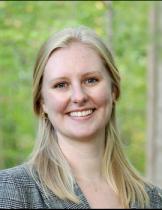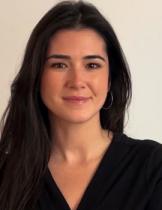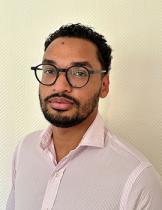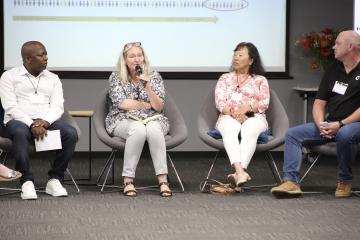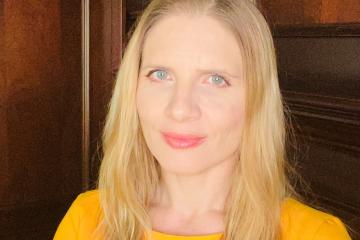
Scaling safe water access: J-PAL Africa's new Portfolio
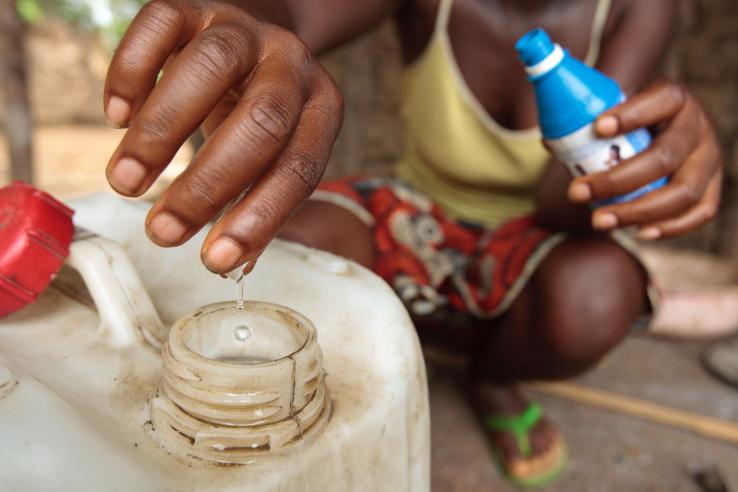
J-PAL Africa has launched a new policy portfolio, Scaling Access to Safe Water in Africa (SASWA), designed to support governments in integrating and scaling water treatment programs. SASWA builds on decades of research generated by J-PAL affiliated researchers, including Pascaline Dupas, Nobel laureate Michael Kremer, and their coauthors, that demonstrates the potential significant health benefits and cost-effectiveness of subsidizing dilute chlorine solution. Under the guidance of Pascaline and with support from J-PAL invited researcher Elisa Maffioli, a newly assembled team at J-PAL Africa is working to support governments to adapt, pilot, and scale context-specific programs to expand access to safe drinking water.
Why water treatment?
In 2022, an estimated two billion people lacked access to safe drinking water, including over 400 million people in sub-Saharan Africa. Contaminated water is a major driver of disease, particularly in areas where households rely on untreated or unprotected water sources. Pregnant women, young children, and older adults are particularly susceptible to waterborne illnesses such as cholera, Escherichia coli infections, and rotavirus, which can be fatal without medical intervention. In 2021 just over 250,000 children under five died from diarrheal diseases across African countries.1
Many of these deaths could be prevented through low-cost interventions. Water treatment is one of the most cost-effective ways to reduce child mortality, comparable to childhood vaccination and malaria prevention. A recent meta-analysis of nineteen randomized evaluations evaluating water treatment by Kremer and coauthors estimated that treated drinking water resulted in a reduction in under-five mortality of 20 to 28 percent, highlighting the potential public health benefits of expanding access to water treatment.2
Evidence on chlorine subsidy models
Dupas, Kremer, and their collaborators conducted a randomized evaluation in Kenya from 2007 to 2008 comparing the use of dilute chlorine solution across households offered one of three possible types of subsidies for the product:
- a partial (fifty percent) subsidy on chlorine bottles,
- free chlorine bottles through monthly vouchers, or
- a supply of free chlorine hand-delivered every few months.
Water treatment rates in follow-up surveys were only twelve percent among households that had to co-pay for the product. In contrast, the rates among the full subsidy types, vouchers and hand-delivery, were 33 and 34 percent, respectively.
These results generate two key insights. First, because the cost of dilute chlorine solution is very low, both types of full subsidies are highly cost-effective—even if water treatment rates among subsidy recipients are far from 100 percent. Second, a well-designed voucher model can be a very effective way to target households with a genuine interest in using the product to treat their water.
A second study in Malawi conducted several years later showed the insights from Kenya were applicable in another context, and the impacts lasted over a period of eighteen months.
Together, this body of research demonstrates the effectiveness of low-cost chlorine subsidies in increasing access to safe water and motivates J-PAL Africa to translate this evidence into action.
Challenges to expanding access
Despite the significant public health risks associated with contaminated water, as Dupas explains, water treatment often receives comparatively less attention in public health policy: “Water treatment has just been neglected, not just by governments but also by donors.” She notes that one reason for this is that water treatment falls at the intersection of health and water services, presenting a coordination challenge among multiple government agencies.
SASWA responds to this challenge by working in partnership with governments to design and implement sustainable programs which are integrated into the existing health systems. J-PAL Africa offers technical assistance to tailor the type of subsidy and contextualize key aspects of the program to ensure all households interested in treating their water with chlorine have access to the subsidized product.
SASWA: A new effort in applying evidence
Interest among donors in cost-effective health interventions has grown in recent years. GiveWell and the Weiss Asset Management Foundation have provided funds for the first two years of SASWA. In recommending funding for this portfolio, GiveWell wrote, “We think chlorine vouchers programs are a promising way to reduce child mortality in locations with a high burden of waterborne disease. [...] We expect this grant could unlock opportunities to fund future chlorine vouchers programs in high-burden locations.”
Expanding access to safe water treatment has the potential to save lives and improve health across the continent. The SASWA Portfolio includes an established partnership with the Rwandan government to pilot chlorine vouchers in maternal and child healthcare packages, and scoping efforts in more than a dozen other African countries.
J-PAL Africa is excited to continue building partnerships and supporting the adaptation and scaling of innovative water treatment subsidies to expand access to safe water for households across the continent.
To collaborate with SASWA or learn more, please email [email protected].
1 Source: Institute for Health Metrics and Evaluation. Used with permission. All rights reserved.
2 The authors have shared forthcoming updates with J-PAL Africa reflecting nineteen evaluations and a slightly attenuated reduction in mortality, which we reflect here.
